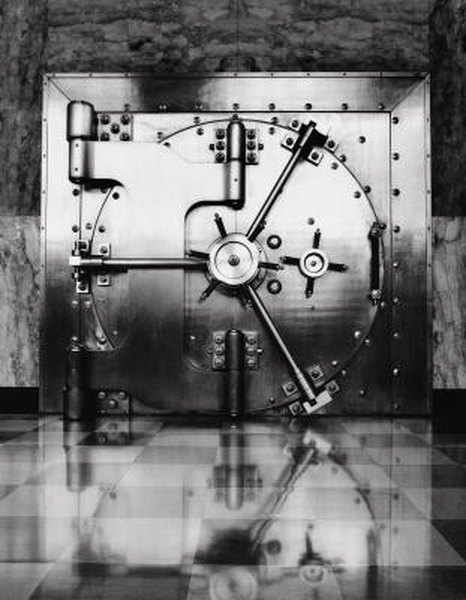How to Figure the Book Value of Bank Stock
Bank book value is important, but also consider an institution's market value.
Digital Vision./Digital Vision/Getty Images
Book value can refer to several ways to analyze a business, but when it comes to bank stocks, the book value pertains to the net asset value of the company. That net asset value is determined by subtracting intangible assets and liabilities from total assets. Book value represents an important valuation for bank stocks because banks are typically analyzed in different fashion than stocks in other sectors.
Intrinsic Value
A component or complement to book value is a stock’s intrinsic value, or what the company would be worth when only its positive assets are counted. To get to that figure with a bank stock, investors must consider income from and growth of the bank’s deposit base, interest rate considerations, quality of the loan portfolio and other factors. From there, the cost of attracting deposits from loan revenue and there is an easy to get to a bank’s intrinsic value and on the way to book value.
Getting to Book Value
Investors can read a quarterly or annual earnings report from a bank to identify its total assets. Then, you would subtract its liabilities. So, if ABC Bank has $10 billion in assets and $5 billion in liabilities, it would have a book value of $5 billion. If the bank’s market value was well below $5 billion, say $2 billion or $3 billion, analysts and investors may be inclined to look at the bank as undervalued. Market value or market capitalization represents a company's total shares outstanding multiplied by its current share price. Market value for banks has come to have added importance since the global financial crisis because market participants understand that the U.S. government is unlikely to allow large banks to fail even if those banks are financially imperiled.
Book Value Per Share
Book value per share tells investors what a bank’s, or any stock’s, book value is on a per-share basis. To arrive at this number, subtract liabilities from assets. Then divide that number by the number shares outstanding the bank has and there is the book value. For example, if ABC Bank had $10 billion in assets and 1 billion shares outstanding, the bank would have a book value of $10 per share.
Not Foolproof
As a standalone valuation metric, bank book value can be useful, but it is not foolproof. For example, during the 2008-09 financial crisis, book values on scores of banks plunged. That indicated the market thought many of these banks were worth more dead than alive, according to the Wall Street Journal.
References
Writer Bio
Todd Shriber is a financial writer who started covering financial markets in 2000. He worked for three years with Bloomberg News and specializes in analysis of stocks, sectors and exchange-traded funds. Shriber has a Bachelor of Science in broadcast journalism from Texas Christian University.

